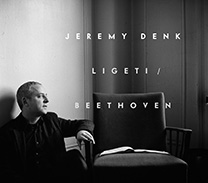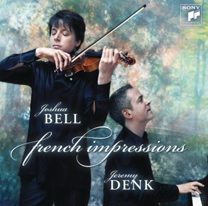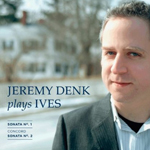I am prone like many concertgoers to terrible, quasi-spiritual restlessness. I wiggle about my cushion. I creak and sigh. My legs take turns becoming unhappily aware of themselves. My mind gives up, surrenders helplessly to the pointless rustle of my program booklet. Agh. What do I possibly think I will find there?
The other week I read the program notes (!) for my own performance of the “Spring Sonata,” and I read that the slow movement was a kind of touchstone. The word leapt out at me. Ah, yes, I thought, in the flush of affirmation, so true, so very true! and at the very next moment I wondered, hey, what is a touchstone? Heh. I am going through a little phase of loving my Dictionary app on my computer (me: easily pleased), and surrender myself between emails to little ecstasies of word clarification. Aha! I think, and then, How do they do it?, because my concepts of words are so corrupted by usage and life and sake tastings that they drift like icebergs farther and farther from their supposedly incorruptible cubbyholes of meaning—so that when I see the “actual” meaning there on the page, expressed in a few well-chosen words, I am often baffled, like when you run across the pimply bespectacled school nerd at your 10-year reunion and he has become a dazzling supermodel.
Finally, I met someone who works at a Very Important Dictionary. I assumed that if you could really know What Words Mean, you would be analogously precise at all other areas of life—that you would never make a late payment on your credit card, or lose your keys, or miss a flight, etc.—however, what I really didn’t expect or predict was that this highly-placed dictionary person would have the sparkle of a certain insane joy for life, a certain devil-may-care, wicked-librarian-on-the-loose quality (no reference tome she!) … and I looked at dictionaries differently from then on, with a kind of “I know what you’re up to” glare, as if, despite their perspicacity, they might suddenly get up from their dusty pedestals and go clubbing until 4 in the morning and then drive hurtling nonstop to greet the dawn in Montauk.
So. The word touchstone—as I’m sure you all know—refers to “a piece of fine-grained dark schist or jasper formerly used for testing alloys of gold by observing the color of the mark that they made on it.” By which metaphorically (perhaps usage is not such a big, bad, sinful bogeyman after all!) it has come to mean, “a standard or criterion by which something is judged or recognized”: is this what the program notes really meant?
I was seduced not by judgment or criterion, but by the image: the one stone scraping against the other, as a way of knowing if a stone was “good.” Knowing by the mark that is made, by the grit, the dust left behind. I imagined a composer taking his material and scraping it up against certain things (processes, problems, surprises, limitations), and knowing thereby that he had something worthwhile to work with. And I am always desperately questing for new “sublime” images and metaphors to express the ridiculous exasperation of playing the piano … the sheer physical illusions and self-deceptions at the heart of the enterprise, the grit you must find within. 88 identical silly (plastic!) keys and what you are looking for is always in between them; a situation in which (at bottom) you are simply pressing a button down a very small distance, over and over again, behind which gadgets mysteriously, heartlessly operate; you must always press down though you want many of the notes to feel “up;” you are a deluded Frankenstein, pretending to animate an inanimate object; you want to feel the keys, though they cannot “feel” you; inevitably, absurdly, you may feel that how you cross the next 3 millimeters of space with your little finger may mean as much, say, as the Complete Works of Shakespeare. The monstrous tension you must feel inside of you between two notes: a total paradox against the polished mechanical ease of the big black monster. And by the way, in case you were wondering, you are always scraped against the piano to measure your own worth.
I was sitting restlessly, ruffling program pages, thinking these thoughts, listening to some very beautiful singing, and not in the mood for those beauties. I needed edge, and I needed to be scraped. There was no mental touchstone, there was some unmeasurable quantity slipping away from me every moment, some repetitive random loss, and my head was sinking into a soft flutey fuzz. Nina Simone’s version of “Just in Time” popped into my head and I craved it deeply; I needed to flee. The person next to me whispered to his friend that the music we we hearing was “luminous,” and I snarked, yes, luminous like the soft light in a GE commercial … not like the light of Nina’s singing, the brazen belted thrash of her notes, their harsh waver …
When I got home I played “Just in Time” over and over and—yes!— the edge was there, just where I left it, in the CD player. I lolled amongst my unopened scattered mail and sang along horribly, passionately.
But also in my head, suddenly, conning its way in, was the slow movement of Op. 96, saying, hey, I’m in E-flat too! I had a little cascade of epiphanies. Both begin with relatively simple, periodic, well-behaved delineations which then reach unprecedented, unexpected emotional heights; they sear similarly; they both yearn and want so much; they both are exhilarated in a dark place; they both sit at the edge of loss, contemplating destruction from a vantage of redemption. Both begin from an accepted basis, buy into it, as it were, but when they open up what they’ve bought, they get more than they bargained for.
Nina’s point of departure is the standard “Just in Time”: she’s not, I think, in love with the tune, but with latent possibilities: rising suspensions, cresting waves of intensity–what the tune allows her to see. So that when first she sings “just in time, you found me just in time,” there is a ho-hum, here-are-the-chords quality … just layin it down for you, baby. (Same as opening of Beethoven, without the “baby.”) Yes, there is the world, do you see?, the song exists, like anyone’s perception of the world, within boundaries … but the piano takes over, improvises, and in the process something about the harmonic scheme begins to crystallize, some of the latent “problems” emerge … and when Nina reenters, the boundaries vanish, she’s almost incanting; the words are charged, electric, out of control, over the same harmonies, now an enormous scrape of intensity:
I was lost [wonderful suspension over the harmony change]
the losing dice were tossed [suspension, surge in piano]
my bridge is overcrossed [more surge in piano]
nowhere to go [desperate, up to F]
nowhere to go [rising to G, even more desperate]
[brief respite] so let’s live today anyway…
… and finally, with the words, CHANGE ME, CHANGE ME two tremendous vocal slides, scraping over the essential, central pitches of the song (A-flat to E-flat), but absolutely grating, dissonant, passing from song into cry, the cry of the desire to escape yourself (to escape the song) to destroy your own habits and become a new, redeemed person … totally overwhelming … and when it is done, you know, breathlessly, that the song is “good.” I find myself shaking, vibrating, thrilled. I press repeat on the CD player, like a child, and do it all again.
Beethoven’s point of departure is the chorale … a beautiful chorale, to be sure, but “just” a chorale. How can a chorale be edgy? But it is; its sweetness is constantly laced, mixed, complicated, etched. I got obsessed with imagining the piano’s opening chorale …

as a whole, arching, thing, kind of a singularity, a particle of music. Why? When I play it, to begin with, I want the spell of unity. I want to make love to coherence, the kind of emotional SuperGlue, which builds and breathes life into the sentence. In musical analysis we do due but strange deference to this coherence; we realize (perhaps?) it is so important, so emotionally basic, to hear and feel the one-thingness of it, that, with a pedagogical flourish, we label it with the most heartless possible term, perhaps just a capital A with a bracket, like so:

… code telling us A is the first thing we hear (therefore letter “A” and not “B”) and it lasts just that long (8 measures, in case you are counting) and this is all—do you get it?—one thing. We analysts, in our modesty, and despite our labeling mania, don’t by any means want to “encumber” the music with any emotional subtext, so we use a letter and a bracket and leave the emotions up to you. Anyway they’re not that important, haha.
I would like to abolish the A bracket. It domesticates units. It reduces a whole to a thing. I hate it. I propose in place of the A-bracket combo, the idea of a musical “image.” This chorale is an image. Ezra Pound (the Imagist) wrote a rather famous, beautiful image:
In a Station of the Metro
The apparition of faces in the crowd;
petals on a wet, black bough.
You see, it all goes together, the vision, in a flash? But in the first printing he wanted it separated thus…
The apparition of faces in the crowd;
petals on a wet, black bough.
…which Kenner describes as “one image, five phases of perception.” I love this expression. The chorale, too, cut up into four similar phrases, each a variation on the other, each reflecting back on the other: and I think that is the perfect way to describe what happens, emotionally, musically: one image, four phases (phrases) of perception. It unfolds in time and each moment is of course different from, consecutive, “after” the last, but behind the consecutiveness and more important than any “after” is something that continuously spreads its tentacles everywhere, connecting, pattern-making, associating… a total image, a metaphoric associative dazzle …
There is, finally, something which interrupts the image, which expands or distorts it. (Which scrapes against it, makes clear its value, its meaning.) At the end of the chorale, the final three notes are repeated several times … G-F-Eb …

How can this soft, diminishing, peaceful ending paradoxically be edgy, be a touchstone? I don’t want to “encumber” the music, or make any of you purist analysts all uncomfortable-like, but for some reason this moment provokes me into all sorts of wild associations. The chorale has a rhythm, an inevitability (perhaps: a sing-songy predictability) and this repetitive conclusion is like a strange, alien, stretching at the end of its symmetry… an oddity pulling at the fabric of the piece (the chorale has a fabric, a weave)… When I think about this, I get an image, out of nowhere: a child tugging on the corner of her mother’s dress, saying “no, come this way,” or simply: “let’s go to sleep, let’s just rest here a while.” It is an unnerving, premature lullaby. The movement has barely begun, and yet (and yet!) there is a desire to surrender to the lulling, seeming ending; to give up (as if your bridge were “already overcrossed”), to dangerously allow an imagined repose.
By pulling the chorale out of its rhythm, this repetitive passage places it in a wider context of meaning … some way, some criterion (hmm) to measure and comprehend the chorale’s existence.
So we have lulled ourselves to sleep. Only by the most extraordinary leap of the imagination (and a literal leap of notes), does the piece wake itself up … an unexpected leap now infused with enormous meaning in the context of the lullabying sameness…

If we were really boring, we would say, describing this passage: “the violin now enters with a new melody, accompanied by the piano,” and we would write out the violin melody so everybody knows what it is:

But those two first leaping, symbolic notes, leading into the melody …

are taken up by the piano’s accompaniment, becoming a kind of constant, haunting reminder underneath:

What is the accompaniment’s role, anyway? In the opening chorale, a “typical” accompanimental situation is present: the sixteenth notes run beneath the melody, like a river—filling, fluidity, connection—expressing the slurs over the notes with smaller notes which do not presume too much, which do not take too much space, which know their place, which leave room for melody, for something “greater.” There is an acceptable hierarchy of meaning and value. But here, there is some confusion; the piano’s “accompaniment” keeps referring to the beginning of the violin’s “melody” (as if it wants to start over, to rehear the amazing opening), and keeps stopping short of the beat, a broken river. Which is melody and which is accompaniment? There is confusion, a sort of scrape of meaning between the two parts, as if instead of one stream, the discourse branches into two:

The violin’s melody moves slowly, is not particularly “catchy,” appears to be plain, empty. It plays unguarded notes, diatonic notes without “edge”–if you look at them by themselves–which need to be filled with meaning. And the piano is trying to fill in these notes, to make sense of them—or at least that is its “role.” The violin and piano, in a sense, keep measuring themselves against each other …
The piano is trying to give the violin a harmonic point of reference; at the same time each gesture is insufficient, and the violin keeps shifting, and the chain never stops. What the piano is trying to fill cannot be filled; there is more meaning there than it is capable of expressing. Instead of the river: a continuous breaking-apart, an accompaniment which expresses its own futility, where the image and its meaning refuse to merge. This “accompaniment,” which began its life as the introduction to a melody, this dissociated bit, becomes an obsessive idea, a constant burn behind the coda, a tremendously touching instability: a touchstone for the whole movement, scraping and leaving its mark irrevocably on the initial evenness of the chorale. The rhythmic tension of this idea “redeems” the chorale, saves it from its lull or its predictability, proves its worth. The lack of merging, this branching of thought, this grind of melody against accompaniment is so beautiful that each time as I play it I begin to feel myself changing (CHANGE ME!); at each rest, where the violin plays its new note and I am mute, I love, I desperately hold on to what I am not able to say.



8 Comments
I love your writing.
Your last beautiful paragraph would be the best required reading for any “collaborative piano” student on earth. Thank you.
i love nina simone, she can make anything sound fabulous; so can sarah vaughn.
that’s funny you’re describing the piano as a big black monster. i used to describe my telephone as a little black monster, while as a teenager i waited for it to ring. i take piano lessons and find it fun, but intimidating; almost like learning another language.
i saw you at the 92nd st y with ron kapilow and you were super. your beethoven rocked.
actually, it was the walter reade theater at lincoln center, not the 92nd st. y.
I grew up playing both violin and piano but eventually chose to focus on the former, feeling that I could express myself more directly through a stringed instrument. Your imagery articulates why that is, more clearly than I ever could to myself or anyone else. Thanks for another beautifully written entry.
haha i do the same thing with the dictionary app on my computer! i thought i was the only crazy person that did that. you have an apple computer?
Thanks for more proof that you’re Tovey for our time, illuminating music with words almost as well as you do with your hands.
Did take me a while to figure out which work is Op. 96 – a sad barbarian I.
Fabus essay, I was thinking about this point in doing my recent video, it was the, not touchstone, but oblique strategy, which I needed..